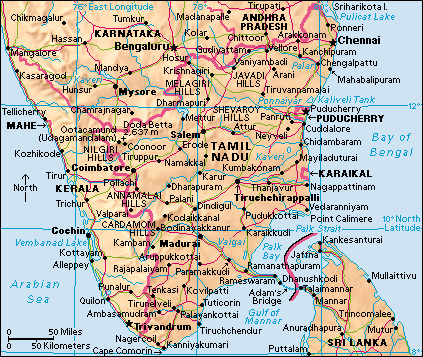Kanchipuram (pop. 152,984) is a city in the southern Indian state of Tamil Nadu. It lies on the Palar River, about 45 miles (72 kilometers) to the west of Chennai (formerly Madras). It is one of the holiest cities in Hinduism and an important place of pilgrimage. At different times, it served as the capital of two powerful south Indian dynasties, the Pallava and the Chola (see Chola Empire ). It is sacred to both Shaivite (followers of Shiva) and Vaishnavite (followers of Vishnu) Hindus. It is also a center of weaving and silk production.

Kanchipuram has more than 100 temples, both Shaivite and Vaishnavite. The gopuras (gateways) of some of these temples can be seen from far outside the city. The most famous of the temples is the Kailasanatha Temple, built in the 700’s, which is, architecturally, one of the most important temples of its time in southern India.
Kanchipuram is one of the oldest cities in southern India, and it has long been a religious center. Before Hinduism became the dominant religion in this area, Kanchipuram was a center of Jain and Buddhist religious learning and activity. Often known in historical references simply as Kanchi, it dates back at least to the 100’s. It was a center of political power for many centuries afterward. It was the capital of the Pallavas, who ruled the area from the 500’s to the 800’s. It was during the reign of one of their kings, Narasimhavarman II (reigned 642?-668), that the Kailasanatha Temple was built. After the Pallavas fell, the Cholas again gained control of the region and ruled from Kanchi. Kanchipuram remained an important city both when it was ruled by the Vijayanagar Empire and afterward, when European colonists came to the region.
